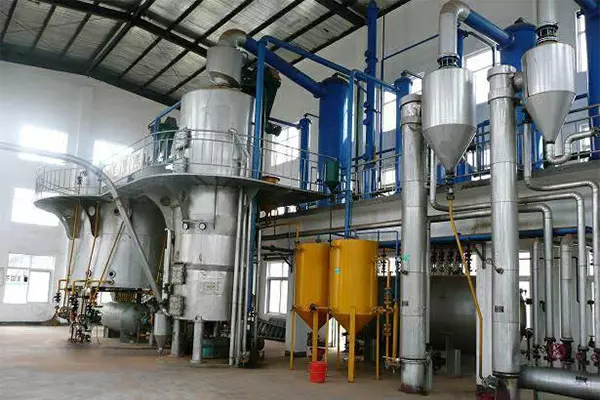
Introduction
At Huatai Oil Machinery, we provide complete solutions for palm oil refinery plants. Our services include palm oil mill plant layout design, palm oil equipment manufacturing, and comprehensive debugging and installation services. When finding the best palm oil refining plant, Huatai Oil Machinery is your go-to provider.
Types of Huatai Palm Oil Refinery Plants
Our palm oil refinery plants employ three main processes to achieve pure and refined palm oil: degumming, bleaching, and deodorizing. Based on the degree of automation, the refinery plants can be categorized into:
- Batch Refinery Plant: Ideal for mini and small-sized production (1-20 TPD).
- Semi-continuous Refinery Plant: Suitable for medium-sized production (20-50 TPD).
- Continuous Refinery Plant: Designed for large-scale production(more than 50TPD).
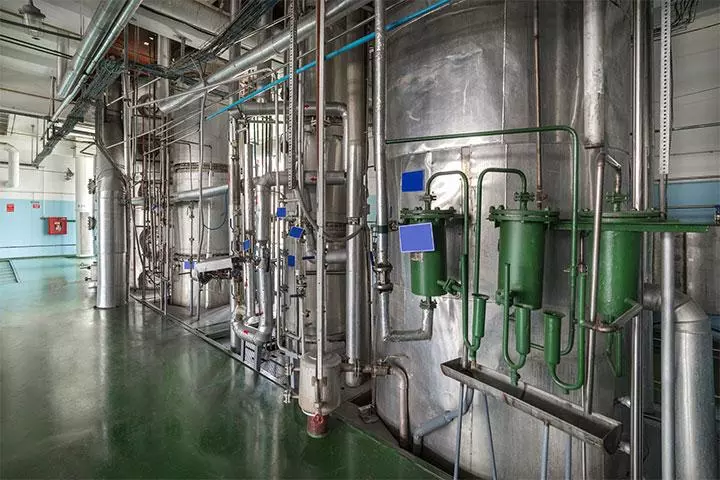
Palm Oil Physical Refining Process
The physical refining process of palm oil is to avoid the use of harsh chemicals and produce oil that meets stringent food safety standards. Each stage plays a vital role in ensuring the final palm oil is of the highest quality. (Read more: how is palm oil made step by step >>)
Step1. Deacidification
Deacidification is the initial step in the physical refining process. This stage involves the removal of free fatty acids (FFAs) from the crude palm oil. FFAs can negatively impact the stability and taste of the oil. The process typically uses steam or hot water to strip these acids away. The steam distillation method is preferred because it avoids the use of chemicals, making the process more environmentally friendly. The FFAs vaporize and condense, leaving a purer form of oil.
Step2. Decolorization
Decolorization, also known as bleaching, aims to remove pigments and other color-causing substances from the oil. This step is crucial for improving the oil’s appearance and taste. Activated carbon or other adsorbents are used to bind with the pigments and odorous substances, which are then filtered out.
The choice of adsorbent and the conditions under which decolorization is carried out can significantly affect the quality of the final product. This step also helps in removing trace metals and oxidation products that can affect the oil’s stability.
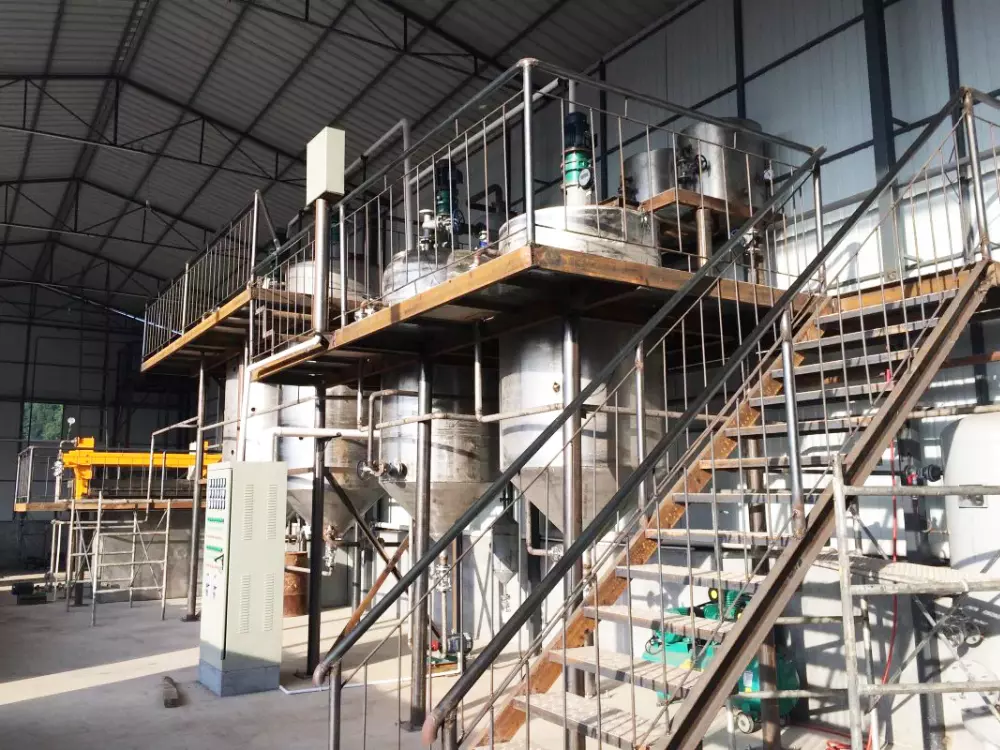
Step3. Deodorization
Deodorization is a critical step that involves heating the oil to high temperatures (usually between 180°C and 270°C) under a vacuum. This process removes volatile impurities such as aldehydes, ketones, and other compounds responsible for undesirable odors and flavors.
The vacuum system helps in the efficient removal of these volatile substances without causing thermal degradation of the palm oil. Deodorization not only improves the sensory qualities of the oil but also extends its shelf life by removing potential sources of oxidation.
Step4. Winterization (if required)
Winterization is an optional step, need to use a crystallization tank. You can depending on the intended use of the palm oil. This process involves cooling the oil to a low temperature to crystallize and remove high-melting triglycerides, which can cause the oil to become cloudy at lower temperatures. The crystallized fats are then filtered out resulting in a clear oil.
This remains stable and visually appealing even when stored in cooler environments. Winterization is particularly important for oils that will be used in products requiring a clear appearance, such as salad dressings and certain types of margarine.
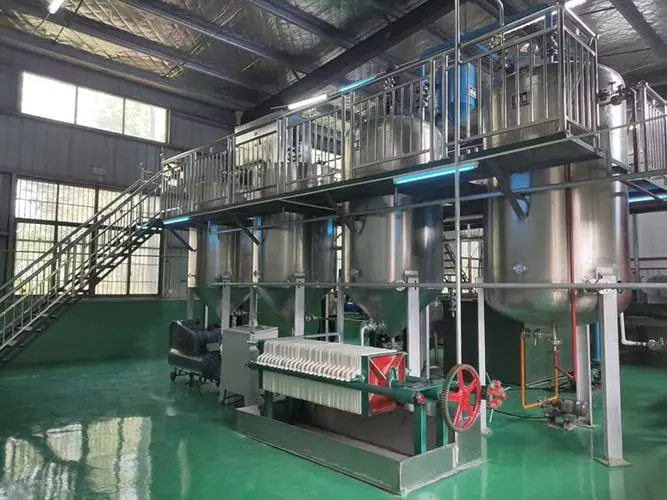
Advantages of Palm Oil Physical Refining Plant
Physical refining involves the steam distillation of free fatty acids from oils and fats under high temperatures and vacuum conditions. This process is suitable for both crude palm oil and palm
kernel oil, offering several advantages:
- Improved production capacity and refining rate
- Reduced production costs
- Shortened processing time
- Direct recovery of highly purified distilled fatty acids
- Minimized wastewater and waste gas production
Most refineries in Malaysia now use physical refining due to its increasing advantages.
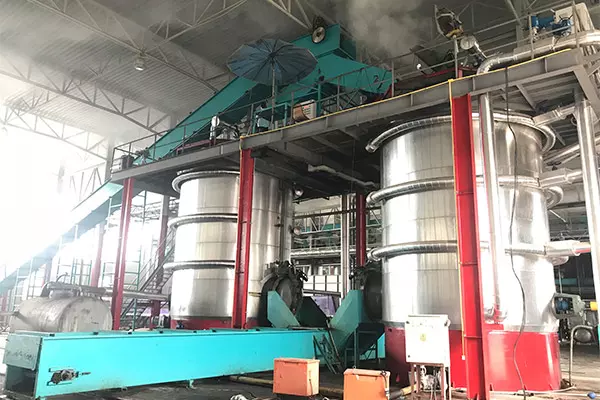
Palm Oil Chemical Refining Plant
Chemical refining is a method used to purify oils by neutralizing free fatty acids (FFAs) with strong bases, forming soaps that are subsequently removed. This process is particularly effective for certain vegetable oils, such as soybean oil, and is beneficial for crude oils with high carotene, high FFA (over 5%), and low phosphatides.
Step1. Neutralization
Neutralization is the first step in the chemical refining process. This stage involves the removal of FFAs by reacting them with a strong base, typically sodium hydroxide (NaOH). The reaction forms soap stock, which consists of soap, water, and oil. This soap stock is then separated from the oil using a high-speed separator, such as a centrifuge. The neutralized oil is now free from FFAs, which improves its stability and taste.
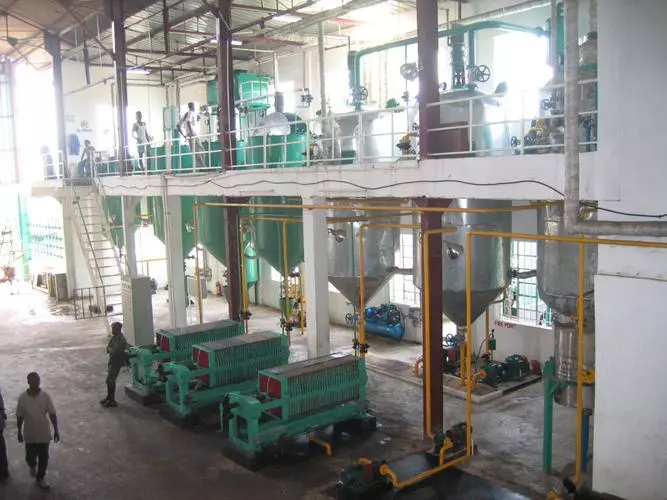
Step2. Bleaching
Bleaching is performed by mixing the neutralized oil with bleaching earth or activated carbon. These adsorbents bind with the pigments and metal ions, which are then removed through filtration. The result is a lighter-colored oil with improved oxidative stability. (Read more: bleaching palm oil >>)
Step3. Deodorizing
The final step in the chemical refining process is deodorizing. You can use our deodorizing tower for volatile compounds that cause undesirable odors and flavors. The crude palm oil is heated to high temperatures under a vacuum, and steam is passed through the oil.
Benefits of Huatai Palm Oil Chemical Refining
- Full automatic control for minimal cost and effort
- Efficient, simple production process with less effluent load
- Advanced, updated equipment for high-quality palm oil
- Comprehensive refining process including neutralization, bleaching, deodorization, fractionation, and more
For cooking purposes, crude palm oil must meet food industry standards by being processed into edible oil through either chemical or physical refining methods.
Cost of Setting Up a Palm Oil Refinery Plant
| Cost Component | Description | Estimated Cost | Source |
|---|---|---|---|
| Land Acquisition | The cost of purchasing land for the refinery plant. | $20,000 – $100,000 | Business Plan for Palm Oil Production |
| Construction and Infrastructure | Building the refinery, storage facilities, and infrastructure. | $200,000 – $1,000,000 | Small Scale Palm Oil Mill Plant |
| Machinery and Equipment | Purchase of palm oil refining machinery and equipment. | $150,000 – $500,000 | ABC Machinery |
| Installation and Commissioning | Cost of installing and commissioning the machinery. | $50,000 – $100,000 | Business Plan for Palm Oil Production |
| Labor | Hiring skilled and unskilled workers for construction and operations. | $30,000 – $150,000 per year | Palm Oil Production Business Plan |
| Utilities | Cost of electricity, water supply, and other utilities. | $20,000 – $60,000 per year | How to Start Palm Oil Production Business |
| Raw Materials | Initial stock of palm fruits or crude palm oil for processing. | $50,000 – $200,000 | How to Start Palm Oil Production Business |
| Licensing and Permits | Obtaining necessary government licenses and permits. | $5,000 – $20,000 | Palm Oil Production Business Plan |
| Transportation and Logistics | Transportation of raw materials and finished products. | $10,000 – $50,000 per year | Small Scale Palm Oil Mill Plant |
| Contingency Fund | Reserve funds for unexpected expenses and overruns. | 10-15% of total project cost | Project Management for Palm Oil Refinery |
Conclusion
Huatai Oil Machinery dedicate to providing high-quality solutions for palm oil refinery plants. With advanced technology and comprehensive services, we ensure that all refining processes are efficient and effective. Whether you have questions about palm oil refining or need advice on setting up a production line, our professional team is here to help.
Get your best price
- Engineer quick quote
- The overall delivery speed is fast
- Financial choice
- Low installation costs and cost savings
30 years+ of oil mill plant R&D
More than 56 innovative technologies
